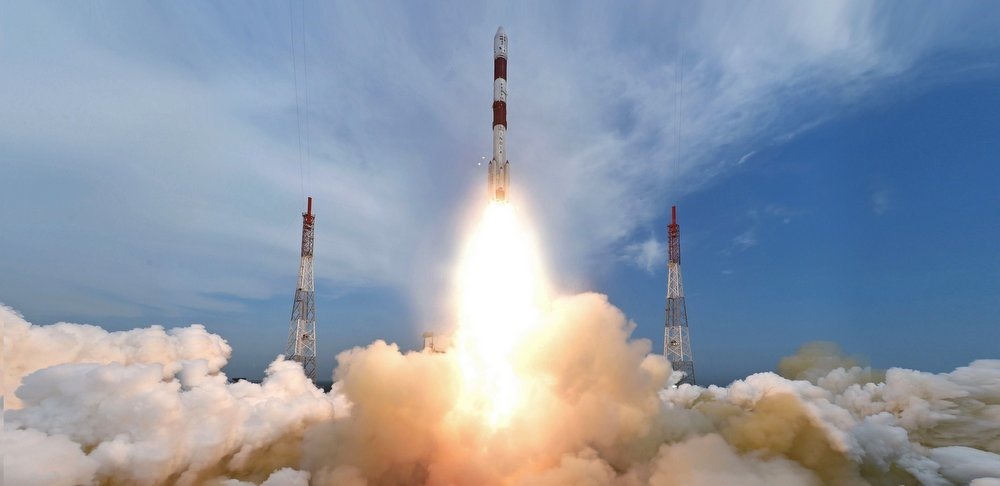ISRO Makes India Proud By It’s Longest Ever Launch Mission; PSLV-C35 Places 8 Satellites In Different Orbits!

At exactly 9.12 AM IST, Polar Satellite Launch Vehicle (PSLV-C35) took off from Satish Dhawan Space Centre in Sriharikota, carrying eight satellites into different orbits. This was ISRO’s longest ever launch mission spanning 2 hours and 15 minutes. By making it 100% successful, ISRO has created another landmark launch, and forced the world to take notice of our technological progress.
Besides, this launch placed the satellites into different orbits, thereby making India the only Asian country to do so, and world’s second country to achieve this complex feat.
Advanced Weather Satellite: SCATSAT-1
Among the 8 satellites launched by PSLV-C35 today, 371 kg SCATSAT-1 was the primary cargo, which would be used for ocean and weather related studies, thereby predicting and forecasting cyclones and other major phenomenon.
As per a press release from ISRO, SCATSAT-1 is a continuity mission for Oceansat-2 scatterometer, which was used to provide wind vector data products for forecasting and predicting weather patterns.
Just like Oceansat-2 satellite, SCATSAT-1 also contains Ku band scatterometer, and its life is 5 years.
Within 17 minutes of the take-off, PSLV-C35 placed SCATSAT-1 in the polar sun synchronous orbit at an altitude of about 730km. It was PSLV-C35’s 37th flight.
ISRO Launches Satellites Of Three Countries With One Single Launch
Out of the 8 satellites, 3 belongs to India, and the rest 5 belongs to three different countries.
Three satellites belong to Algeria: Alsat-1B weighing 103kg, Alsat-2B weighing 117 kg and Alsat-1N weighing 7kg.
One satellite belongs to Canada: NLS-19 weighing 8 kg and one belong to US: Pathfinder weighing 44 kg.
Besides SCATSAT-1, two other Indian satellites are: Pratham, weighing 10 kgs and developed by IIT Bombay and Pisat, weighing 5.25 kgs built by PES University, Bengaluru.
Pratham would be used for estimating total electron count in the space; whereas Pisat is prototype of a Nano satellite, used for remote sensing applications.
All these 8 satellites would be placed in a 689 kms polar orbit.
ISRO Places Satellites In Different Orbits, For The First Time
Using a highly advanced technology called Multiple-Burn Technology, ISRO has placed different satellites in two different orbits.
Once the primary satellite: SCATSAT-1 was put in the designated orbit, PSLV coasted for an hour after which, it’s 4th stage engine was reignited and then shut down for 20 seconds. This provided an additional thrust for the rocket, and enabled it to coast into the polar orbit at an altitude of 689 kms.
After an hour, the engine was against shut off, and then reignited for a period of 1 minute which provided further thrust, after which it started ejecting rest of the 7 satellites.
The main technical challenge was in cooling down the rocket before re-igniting it, that too within short intervals; and then protect the rocket from the heat generated during restarts and reignition.
European Space Agency’s Vega rocket is the only other launcher which has accomplished such twin-orbit maneuver.
